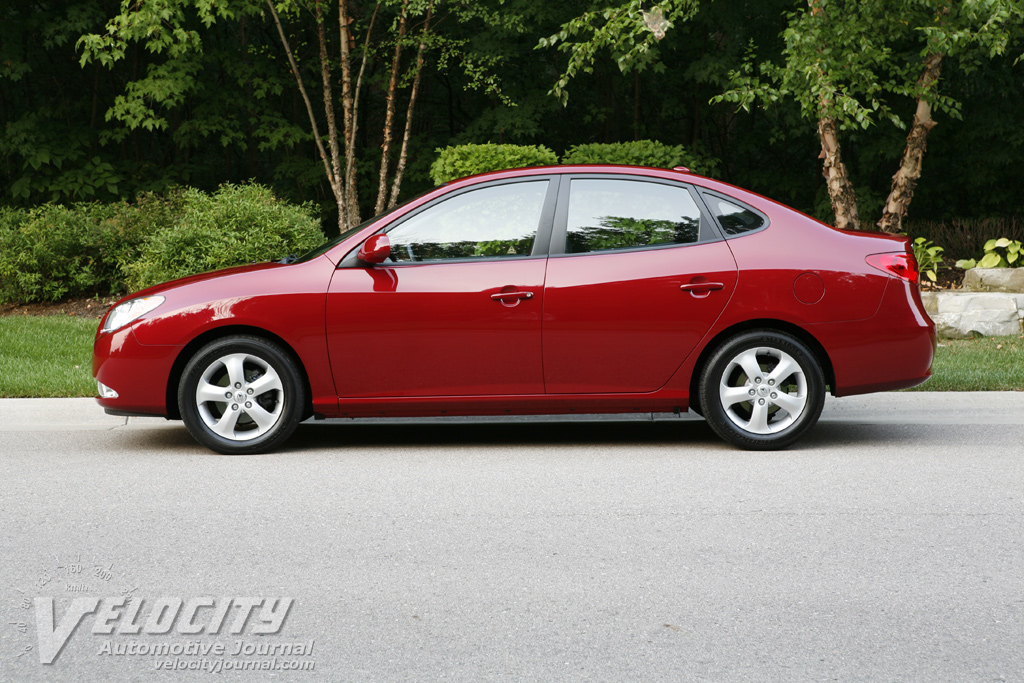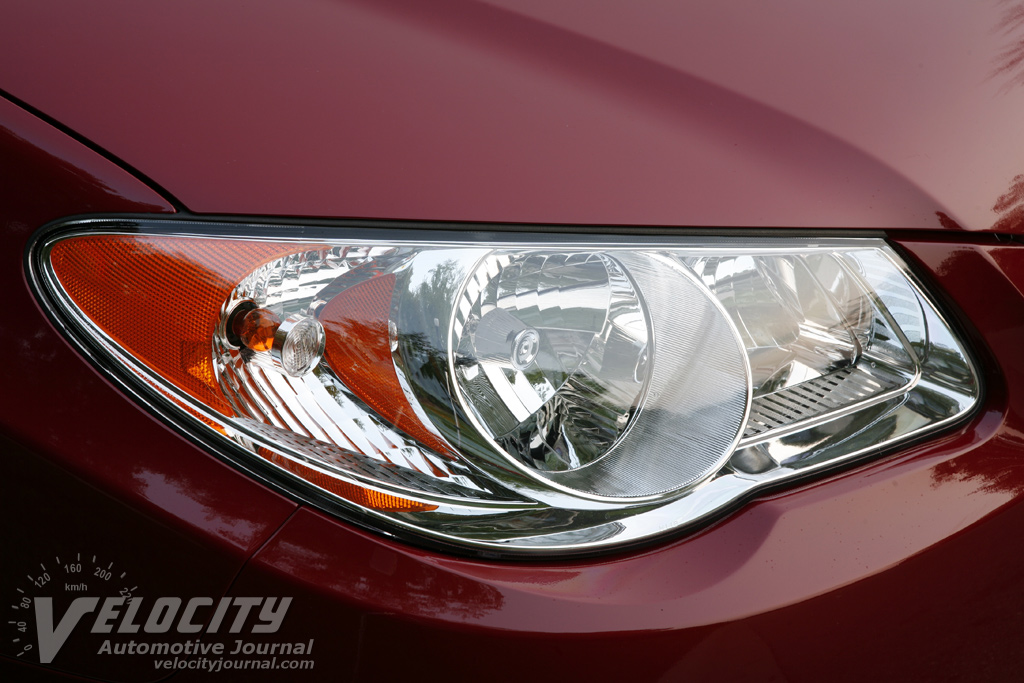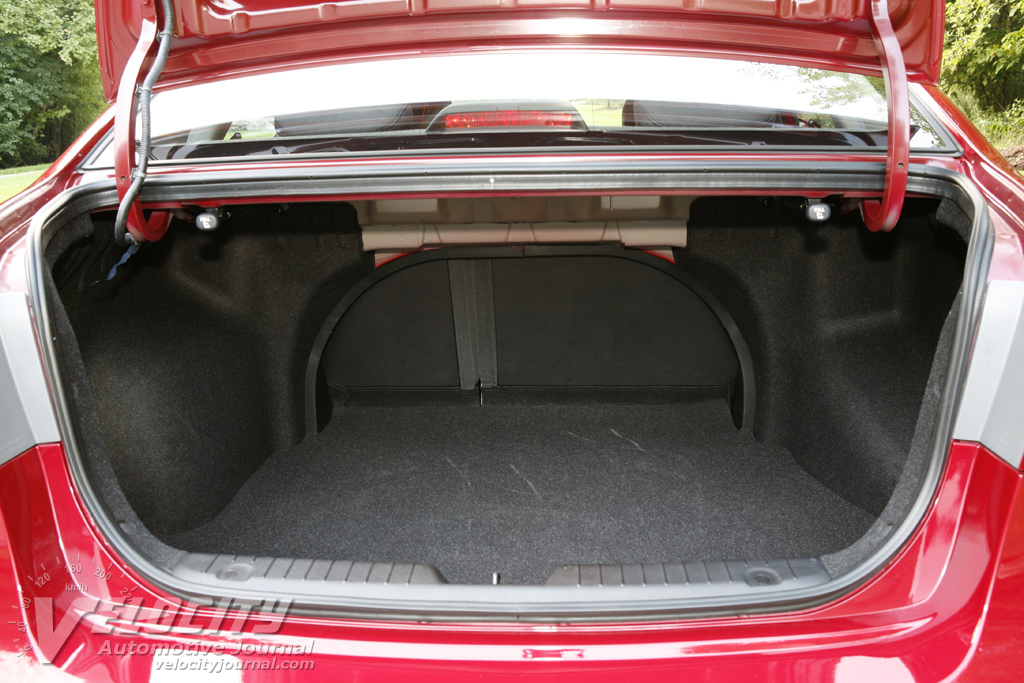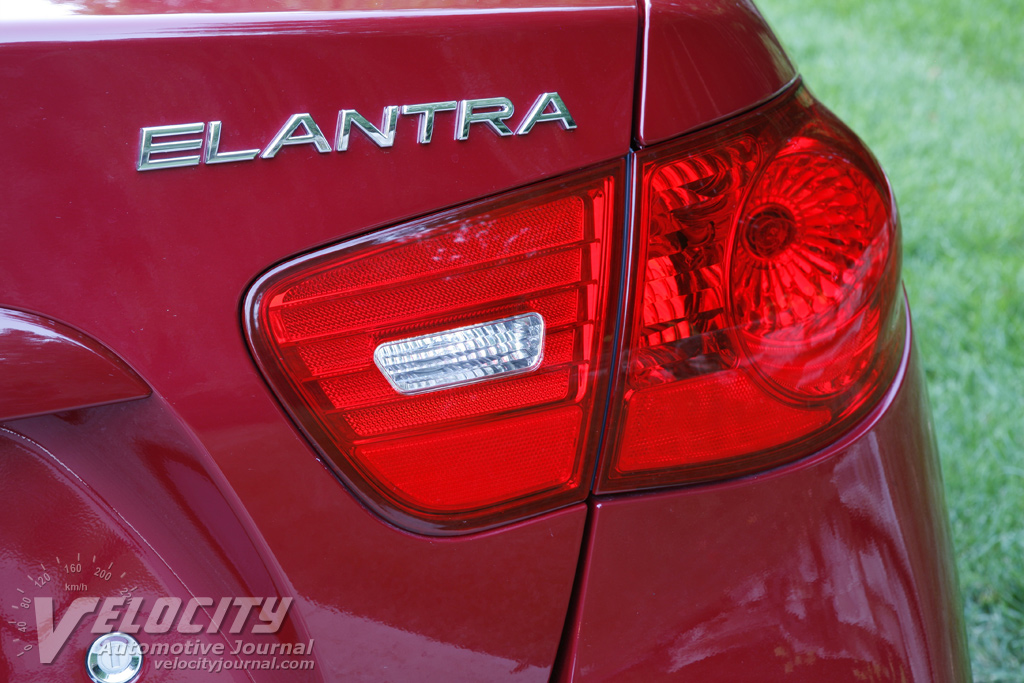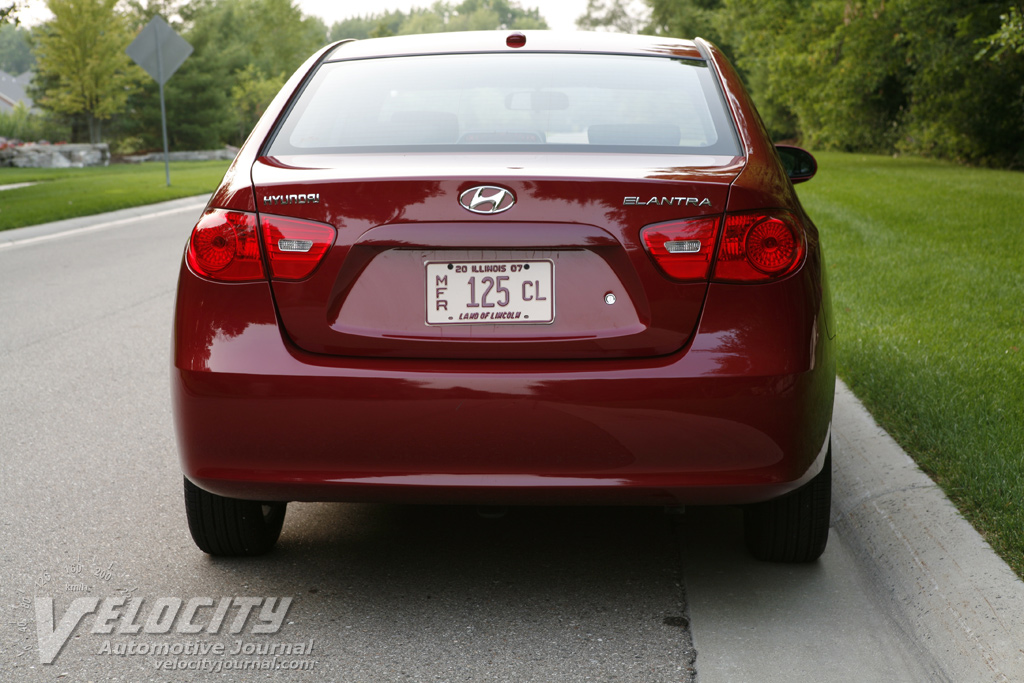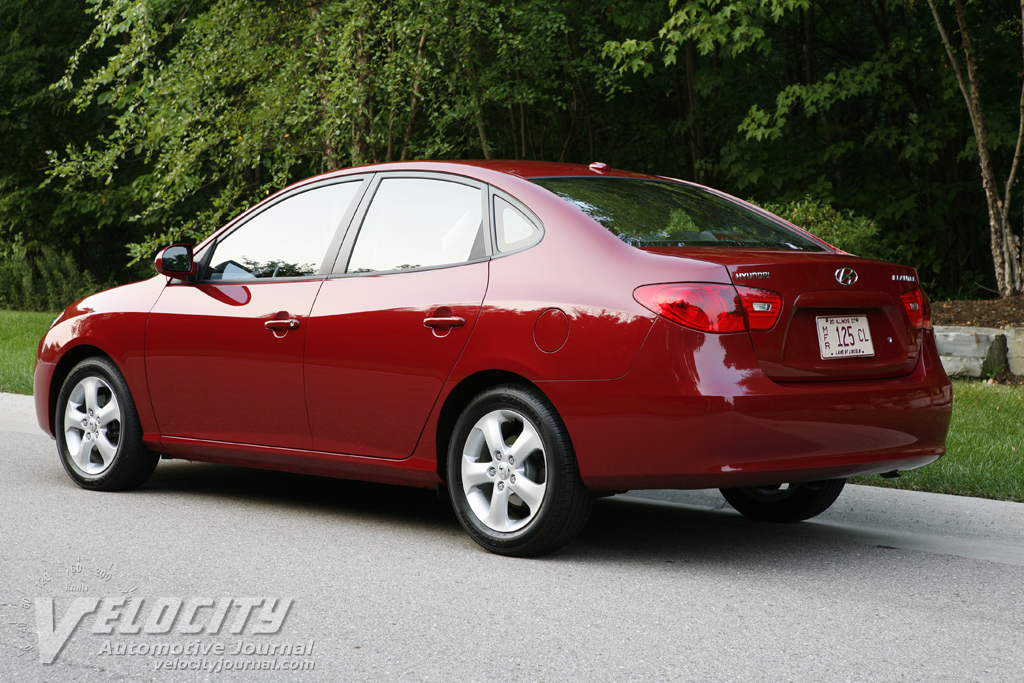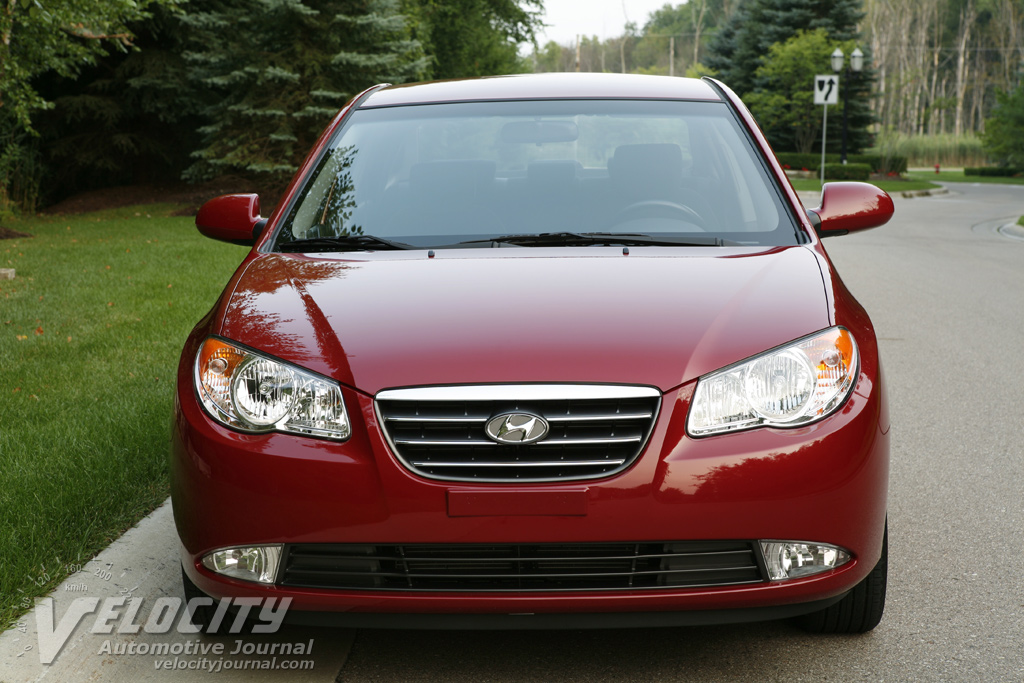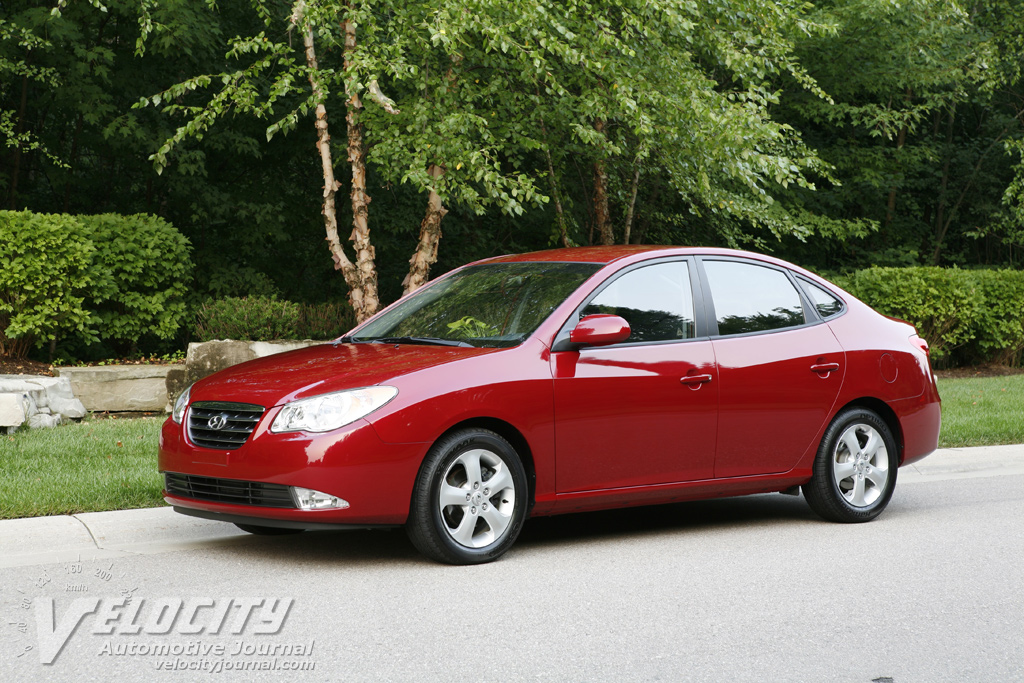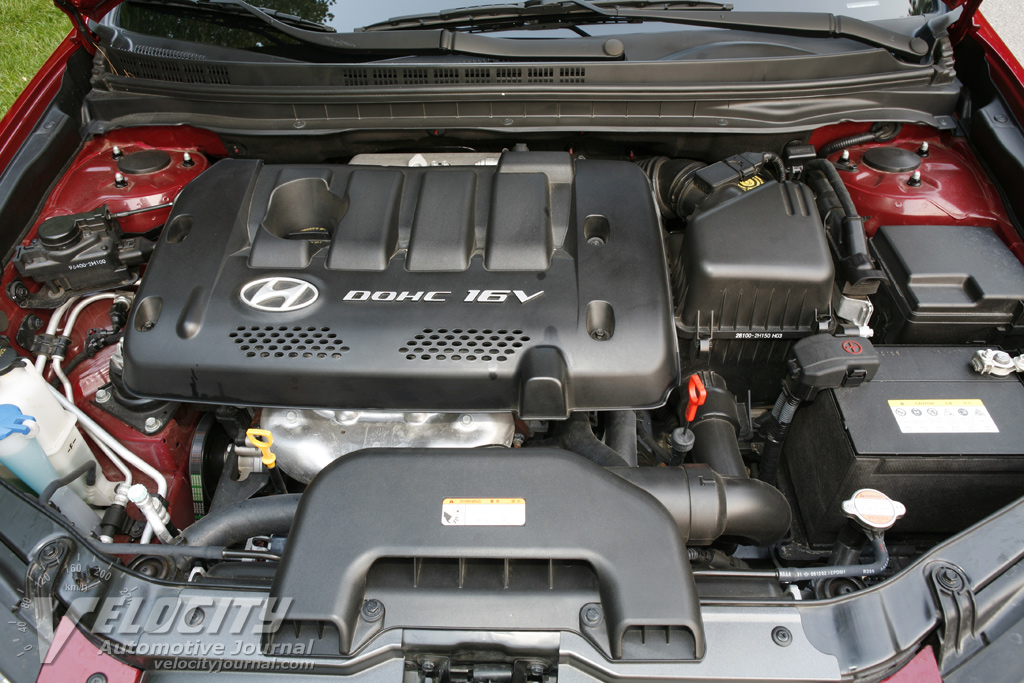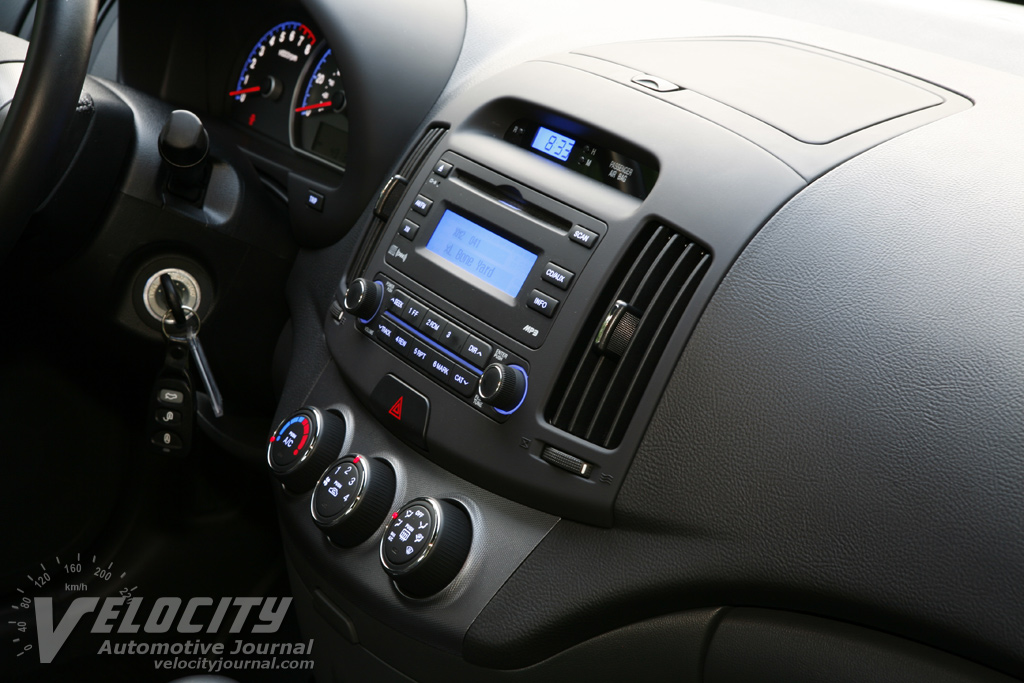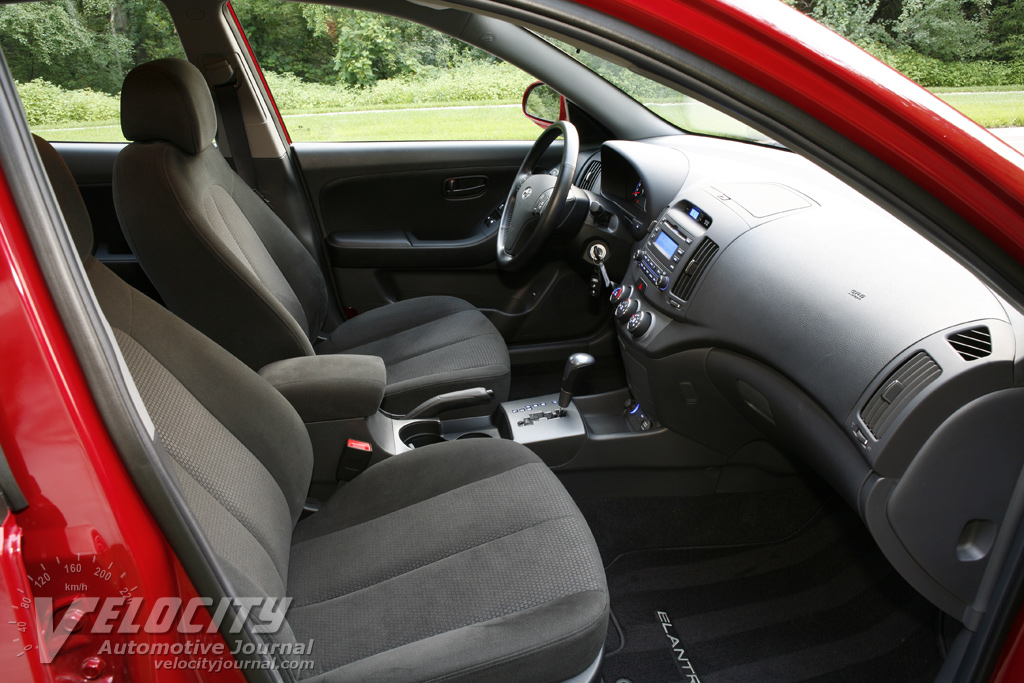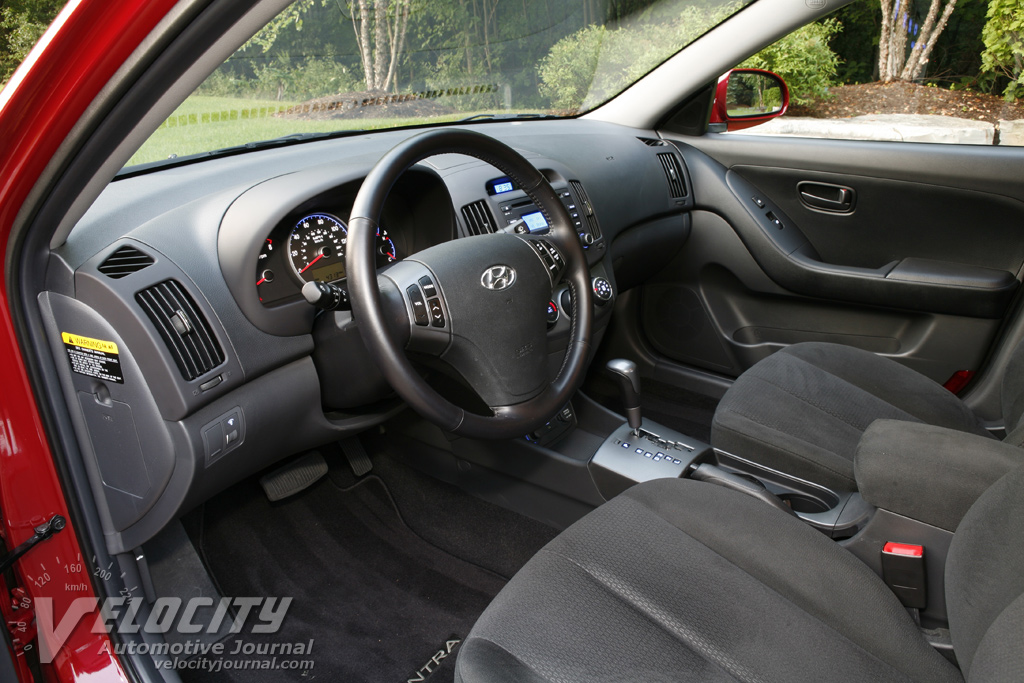2007 Hyundai Elantra SE
08/08/2007
Shahed Hussain
Hyundai has worked diligently to move the Elantra up the ranks of compact sedans. While the earlier Elantras were simply affordable transportation, the newest version is big step up in quality and refinement. As the Elantra becomes more competitive with Japanese compact sedans, its price has crept up closer to its rivals; although Hyundai outfits the Elantra with generous levels of standard equipment compared to its competition.
Our midlevel Elantra SE listed at $15,895 is bracketed by the base GLS ($13,395), and the Limited ($16,895). The only option included in the review vehicle was the 4-speed automatic ($1,000), which replaces the standard 5-speed manual. Hyundai offers an optional $1,150 Premium Package (not included in our test vehicle) that adds a power sunroof and heated front seats. The total for the Elantra SE was $16,985, plus $600 for freight charges. A Civic LX Sedan with a 5-speed automatic is $17,760. A comparably equipped Corolla S with a 4-speed automatic starts at $17,880. The Elantra has a slight price advantage over the Japanese sedans, but includes 4-wheel disc brakes (not available on the Corolla S or Civic LX) and 16-inch alloy wheels (not available on the Civic LX). ABS is standard on the Elantra and Civic, but is part of a $2,775 option package on the Corolla S. The Elantra SE is obviously equipped to satisfy value-conscious buyers, especially in contrast to the more established Japanese competition.
Our Elantra test vehicle was painted in Redfire Pearl (dark red) with a black cloth interior. The curvaceous Elantra combines Hyundai's evolving design language with some derivative details: the taillights appear to be inspired by the Corolla, while the front fascia also bears some resemblance to the Corolla. In profile, the double-curve beltline separates the Elantra from its more conventionally styled competitors. The Elantra is an attractively styled compact that no longer looks like a cut-rate economy car.
Compact sedans are often victims of ruthless cost control, as manufacturers try to eke out razor-thin profit margins on these entry-level cars. Fortunately, the Elantra's interior shows few signs of cost-cutting. Soft-touch dash plastics, amply cushioned armrests, and high-quality switchgear demonstrate that Hyundai understands that compact sedan owners appreciate quality materials. Even the hard plastic panels on the center console and doors are high quality, with excellent trim fits. Although exterior paint quality is acceptable, we did notice that gray primer is visible on the underside of the trunk compartment and hinges. Although this is a minor oversight, it shows that even Hyundai had to make a few compromises to keep costs under control.
Elantra SE and GLS models get a thick leather-wrapped steering wheel with integrated audio and cruise controls. The centrally-mounted 140 MPH speedometer is flanked by an 8000 RPM tachometer to the left, while smaller fuel and coolant temperature gauges are on the right. The white-on-black instruments and audio displays are backlit in a cool blue for easy legibility day or night. Mobile phone users will be pleased to find that the Elantra includes standard Bluetooth® capability; a button on the overhead console allows pairing with compatible phones.
Standard front bucket seats upholstered in dark gray velour-like fabric are comfortable and supportive. Manual adjustments for reach, rake, and height are available for the driver; while the front passenger makes do without height adjustability. The front seats have ample room for passengers up to 6-ft. tall; although the optional sunroof will probably slice a bit off the headroom. Rear passengers get spacious accommodations for two; while even the center seat occupant won't complain too much (at least for short stints). A fold-down rear armrest houses dual cupholders. Buttons in the trunk unlatch the 60/40 split rear seats to reveal a small pass-through opening for skis, lumber, or small suitcases. According to Hyundai, the Elantra's 112.1 cu. ft. of total interior volume exceeds the Civic (102.9 cu. ft.), Sentra (110.8 cu. ft.), and Corolla (103.8 cu. ft.), which actually bumps the Elantra into the EPA midsize category.
The Elantra SE has a surprisingly capable 172-watt CD stereo system, with tight bass and crisp treble. The low-distortion amplifier will crank the six speakers up louder than most people can tolerate; so you know that the Elantra will appeal to younger buyers. XM Satellite Radio service is available. An audio line-in jack between dual 12V power outlets is ideally situated for an MP3 player. Hyundai thoughtfully includes a cable to connect your external audio player to the stereo system.
Storage space for small items is ample. Cupholders are conveniently located next to the handbrake lever; while additional drinks can be stashed in the door pockets. Sunglasses will fit in a compartment on the dash. Two bins between the front seats can accommodate mobile phones and compact discs. A small compartment below the HVAC controls can store an MP3 player out of sight.
The optional 4-speed automatic has a leather and plastic shift lever that slides easily into gear in the gated bezel. The transmission shifts smoothly between gears, but not especially quickly. Regardless of shift mode, the transmission will shift 250-500 RPM below the 6,500 RPM redline. Sliding the lever into "L" restricts the automatic to 1st and 2nd gears only, but it will still select 2nd gear as the revs approach the redline. This is mildly annoying, since the driver never has full control of shift points, but shouldn't pose a problem in normal driving. For performance-oriented drivers, the standard 5-speed manual with its shorter final drive ratio (4.19:1 vs. 3.85:1) is a better choice. Both transmissions choices have the same EPA fuel consumption estimates: 28/36 (city/hwy.) According to the trip computer, we averaged about 29 MPG on the highway at 80 MPH, and about 26 MPG in combined city/highway driving. Based on our experience, the EPA mileage ratings may be slightly higher than what owners may experience.
Hyundai equips the Elantra with a smooth 2.0L inline-4 (138-bhp @ 6,000 RPM/136 lb.-ft. @ 4,600 RPM). This DOHC engine has good low and midrange throttle response due to variable valve-timing, with a linear response up to 5,000 RPM, where the power falls off. The engine note is subdued below 4,000 RPM, but then becomes buzzy up to the 6,500 RPM redline. Although the Elantra will cruise comfortably at 85 MPH, the tall 4th gear ratio keeps the engine too far away from its torque peak, while a downshift into 3rd doesn't provide much additional acceleration. A 5-speed automatic, available on some other compact sedans, would probably improve throttle response at highway speeds.
Unlike some other compact sedans, the Elantra has fully independent suspension: MacPherson struts in front, and a multi-link setup for the rear. Stabilizer bars front and rear keep body roll in check. Bumps that would upset more stiffly sprung sedans are absorbed with no fuss, but the Elantra's suspension always stays connected from the road; even at 85 MPH, the ride is serene and stable. Minimal understeer and relatively sharp turn-in response for a non-sports sedan will surprise many owners. The electrically-assisted steering feels remarkably natural, with just the right effort regardless of speed. All Elantra's get 4-wheel disc brakes with 10.8" (front) and 10.3" (rear) diameter rotors. ABS and EBD (Electronic Brake force Distribution) are standard on all Elantras. With firm brake pedal feel and progressive effort, the Elantra has above average stopping power. Elantra SE and GLS models get 205/55R16 Hankook tires on 16-inch alloy wheels.
Hyundai has really brought the Elantra up to the front ranks of compact sedans. Its combination of standard features, roomy interior, and attractive pricing makes the Elantra a compelling choice for value-oriented customers. What really impressed us most was the Elantra's extremely high interior trim quality and overall superb build quality, which compares favorably with the best Japanese entries. Enthusiasts on a budget should consider a 5-speed Elantra SE, although the Civic and Mazda3 are significantly more sporting alternatives. To its credit, the Elantra is a bigger, more comfortable car than either the Civic or Mazda3. The Toyota Corolla is the Elantra's real target. The Hyundai offers comparable refinement, greater interior room, and a significantly lower sticker price than the best-selling Toyota; which is enough reason to visit your local Hyundai dealer if you're in the market for a compact sedan.

